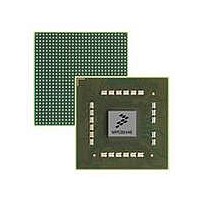MPC8544VTALF Freescale Semiconductor, MPC8544VTALF Datasheet - Page 738

MPC8544VTALF
Manufacturer Part Number
MPC8544VTALF
Description
MPU POWERQUICC III 783-PBGA
Manufacturer
Freescale Semiconductor
Datasheets
1.MPC8544VTALF.pdf
(117 pages)
2.MPC8544VTALF.pdf
(2 pages)
3.MPC8544VTALF.pdf
(1340 pages)
Specifications of MPC8544VTALF
Processor Type
MPC85xx PowerQUICC III 32-Bit
Speed
667MHz
Voltage
1V
Mounting Type
Surface Mount
Package / Case
783-FCPBGA
Processor Series
MPC85xx
Core
e500
Data Bus Width
32 bit
Maximum Clock Frequency
667 MHz
Maximum Operating Temperature
+ 105 C
Mounting Style
SMD/SMT
Data Ram Size
32 KB
I/o Voltage
1.8 V, 3.3 V
Interface Type
I2C, HSSI, DUART
Minimum Operating Temperature
0 C
Lead Free Status / RoHS Status
Lead free / RoHS Compliant
Features
-
Lead Free Status / Rohs Status
Lead free / RoHS Compliant
Available stocks
Company
Part Number
Manufacturer
Quantity
Price
Company:
Part Number:
MPC8544VTALF
Manufacturer:
Freescale Semiconductor
Quantity:
10 000
Company:
Part Number:
MPC8544VTALFA
Manufacturer:
Freescale Semiconductor
Quantity:
10 000
- Current page: 738 of 1340
- Download datasheet (12Mb)
Enhanced Three-Speed Ethernet Controllers
15.4
This section defines the eTSEC interface signals. The buses are described using the bus convention used
in IEEE 802.3 because the PHY follows this same convention. (That is, TxD[7:0] means 0 is the lsb.) Note
that except for external physical interfaces the buses and registers follow a big-endian format, where 0
denotes the msb.
Each eTSEC network interface supports multiple options:
15-6
•
•
•
•
•
•
•
•
•
•
Received frames are by default sent to a single buffer descriptor ring. If multiple receive queues
are enabled, a receive queue filer can be programmed with selection criteria to differentiate
received frames and file them to different buffer descriptor rings. See
Service (QoS) Provision,”
TCP/IP transmit options
Frames for transmission may be sent as-is, with IP header processing, or TCP header processing.
The transmit buffer descriptors, described in
(TxBD),”
described in
Transmit queue selection options
The options supported are single transmit queue, priority-based queue selection, and modified
weighted round-robin queueing. These options are described further in
“Transmit Control Register (TCTRL).”
RMON support
Standard Ethernet interface management information base (MIBs) can be generated via the RMON
MIB counters.
Internal loop back supported for all interfaces except when configured for half-duplex operation
Internal loop back mode is selected via the loop back bit in the MACCFG1 register. See
Section 15.7.1, “Interface Mode Configuration,”
The MII option requires 18 I/O signals (including the MDIO and MDC MII management interface)
and supports both a data and a management interface to the PHY (transceiver) device. The MII
option supports both 10- and 100-Mbps Ethernet rates.
The GMII option is a superset of the MII signals and supports a 1000-Mbps Ethernet rate.
The TBI interface shares signals with the GMII interface signals.
The RGMII, RTBI, and RMII options are reduced-pin implementations of the GMII, TBI, and MII
interfaces, respectively.
SGMII interfaces are offered via the SD2 SerDes interface signals.
Finally, the FIFO interfaces share the GMII signals—8 bits of data plus 3 bits of control signals.
External Signals Description
MPC8544E PowerQUICC III Integrated Host Processor Family Reference Manual, Rev. 1
enable these options and operate with parameters prepended to frame buffers, as
Section 15.6.4, “TCP/IP Off-Load.”
for detailed descriptions.
Section 15.6.7.2, “Transmit Data Buffer Descriptors
for details.
Section 15.6.5, “Quality of
Section 15.5.3.2.1,
Freescale Semiconductor
Related parts for MPC8544VTALF
Image
Part Number
Description
Manufacturer
Datasheet
Request
R
Part Number:
Description:
Manufacturer:
Freescale Semiconductor, Inc
Datasheet:
Part Number:
Description:
Manufacturer:
Freescale Semiconductor, Inc
Datasheet:
Part Number:
Description:
Manufacturer:
Freescale Semiconductor, Inc
Datasheet:
Part Number:
Description:
Manufacturer:
Freescale Semiconductor, Inc
Datasheet:
Part Number:
Description:
Manufacturer:
Freescale Semiconductor, Inc
Datasheet:
Part Number:
Description:
Manufacturer:
Freescale Semiconductor, Inc
Datasheet:
Part Number:
Description:
Manufacturer:
Freescale Semiconductor, Inc
Datasheet:
Part Number:
Description:
Manufacturer:
Freescale Semiconductor, Inc
Datasheet:
Part Number:
Description:
Manufacturer:
Freescale Semiconductor, Inc
Datasheet:
Part Number:
Description:
Manufacturer:
Freescale Semiconductor, Inc
Datasheet:
Part Number:
Description:
Manufacturer:
Freescale Semiconductor, Inc
Datasheet:
Part Number:
Description:
Manufacturer:
Freescale Semiconductor, Inc
Datasheet:
Part Number:
Description:
Manufacturer:
Freescale Semiconductor, Inc
Datasheet:
Part Number:
Description:
Manufacturer:
Freescale Semiconductor, Inc
Datasheet:
Part Number:
Description:
Manufacturer:
Freescale Semiconductor, Inc
Datasheet:











